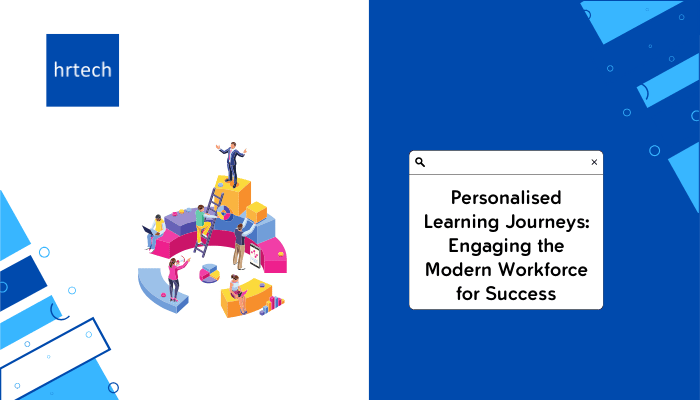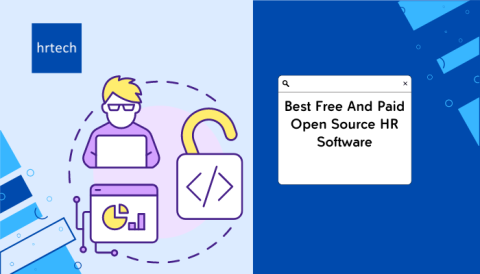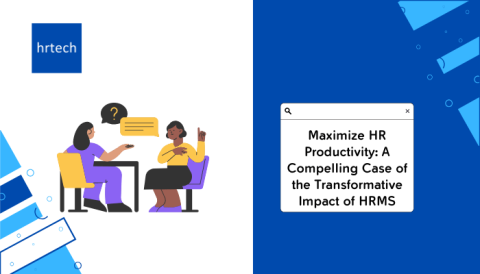personalized learning journeys have become indispensable for fostering both employee engagement and driving business growth. The traditional one-size-fits-all approach to employee development is being replaced by customized learning experiences that address the unique needs and aspirations of each individual.
This shift is critical, as research shows that 77% of companies consider personalized learning a key driver of organizational success. When employees feel that their personal and professional growth is being prioritized, they are more likely to remain loyal to their employer. In fact, 94% of employees indicate they would stay longer at a company that actively invests in their learning and development.
These personalized learning experiences allow employees to develop the specific skills they need to advance in their roles, while also aligning with the company’s broader goals. This approach is especially crucial in today’s competitive landscape, where the ability to adapt and innovate is paramount. Companies that invest in personalized learning journeys are better positioned to stay ahead of industry trends, retain top talent, and foster a culture of continuous learning and development.
What’s the Problem with Traditional Workforce Training?
Traditional workforce training often falls short because it assumes all employees have the same knowledge base and learning needs. This blanket approach doesn’t account for individual differences, leading to disengagement and ineffective learning outcomes.
- Ineffective blanket approach: Standardized training assumes everyone starts at the same level, overlooking the need for personalized learning.
- Diverse skill sets: Employees come with varied experience levels, requiring learning journeys to address different skill gaps and development needs.
Without customisation, traditional training methods struggle to deliver meaningful employee development, leaving employees underprepared and disengaged.
Advantages of Personalized Learning in the Workforce
Personalized learning journeys offer significant benefits in the workforce by customized development paths to individual employee needs, improving both engagement and retention. This approach allows employees to focus on acquiring the specific skills required for their roles, which not only boosts their job satisfaction but also helps the company stay competitive. Businesses that invest in personalized learning see improved performance, as employees feel more valued and are better equipped to contribute to organizational success.
| Advantage | Description | Benefits |
| Enhancing Engagement | Personalized learning customized content to individual needs and preferences, making it more relevant. | Increases learner motivation and interest; leads to higher participation rates and satisfaction. |
| Applicable Content | Content is designed to reflect real-world applications relevant to the learner’s role and goals. | Ensures that learners find value in their training; promotes a stronger connection between learning and job performance. |
| Improving Retention | Customized learning experiences help reinforce knowledge through repetition and targeted feedback. | Enhances long-term memory retention; reduces the forgetting curve by making learning more effective. |
| Better Application | Learners can apply their knowledge in practical scenarios that mimic real workplace challenges. | Facilitates skill transfer to actual job tasks; increases confidence in applying new skills effectively. |
| Customized Learning Paths | Allows for individualized learning journeys based on each employee’s strengths, weaknesses, and career aspirations. | Promotes personal growth and development; aligns training with organizational goals and employee interests. |
| Continuous Feedback | Provides ongoing assessments and feedback Customized to the learner’s progress and needs. | Enables timely adjustments to learning strategies; fosters a culture of continuous improvement. |
How Can You Create Personalized Learning Journeys?
Creating personalized learning journeys involves customized training programs to meet the unique needs, skills, and goals of each employee. By using data-driven insights and flexible learning platforms, companies can provide customized development paths that keep employees engaged and motivated to grow.
1. Identifying Skill Gaps Through Initial Assessment
The first step in creating effective personalized learning journeys is identifying the specific skill gaps of each employee. Conducting initial assessments through tests, surveys, or performance reviews helps pinpoint areas where development is required. This ensures that the learning journey is focused and relevant, addressing the individual’s most critical needs.
- 74% of employees believe they are not reaching their full potential due to unaddressed skill gaps.
- Assessment methods: Use quizzes, surveys, feedback sessions, or performance metrics to analyze where skills are lacking.
- Targeted training: Ensures that employees only receive training on relevant topics, enhancing efficiency.
2. Developing Tailored Learning Plans Based on Individual Needs
Once the skill gaps are identified, the next step is to develop customized learning plans that align with each employee’s unique needs and goals. Tailored learning plans help employees engage with the content more effectively, improving knowledge retention and skill application.
- A 60% increase in retention rates has been reported with personalized learning programs.
- Personalized content: Design training that caters to different learning styles, such as visual, auditory, or hands-on approaches, and aligns with each employee’s experience level.
- Progress at their own pace: Personalized learning allows employees to learn at their own speed, reducing overwhelm and increasing performance.
- Enhanced motivation: Employees are more likely to stay engaged and motivated when learning is aligned with their career goals, improving overall job satisfaction.
3. Leveraging Technology for Continuous Learning
Using HR technology and digital learning platforms is key to making personalized learning scalable and accessible. These platforms allow for continuous learning through on-demand content, virtual classrooms, and mobile-friendly courses, providing flexibility to learn anywhere, anytime.
- Adaptive learning platforms: Use algorithms to adjust training content based on employee progress and performance.
- Mobile learning: Gives employees access to learning resources on the go, ensuring continuous development regardless of location.
- Self-paced modules: Enable learners to engage with material as and when needed, increasing autonomy and accountability.
4. Measuring Learning Outcomes and Progress
To ensure the success of a personalized learning journey, it’s important to track progress and measure the outcomes of the learning plans. This involves using key performance indicators (KPIs) such as improvements in job performance, knowledge tests, and employee feedback.
- Data-driven feedback: Use analytics from learning platforms to gauge the effectiveness of the training and make necessary adjustments.
- Continuous improvement: Regularly updating learning plans based on employee progress ensures ongoing skill development and better alignment with evolving business needs.
Role of Technology in Personalizing Learning
Technology plays a crucial role in personalizing learning by using data analytics to identify individual learning preferences and skill gaps. Advanced tools like AI-powered platforms can adapt training content in real-time, ensuring each employee receives a customized and effective learning experience.

1. Leveraging Innovative Tools and Platforms for Flexibility
Technology has revolutionized learning and development (L&D) by providing flexible, learner-centric tools:
- AI-Driven Platforms: These platforms analyze behaviors to offer immersive learning and adaptive learning paths.
- Blended Learning: Combining online and offline experiences to enable self-paced learning alongside real-world applications.
- Mobile Learning: Employees can learn on the go, making training accessible anytime, anywhere.
- Customisable Learning Paths: customized learning pathways that align with individual career goals and skill gap analysis.
2. Supporting Continuous Learning and Skill Development
Technology not only makes learning more accessible but also supports continuous professional development by integrating:
- Lifelong Learning: Digital platforms enable employees to consistently upskill, supporting the future of work.
- Real-Time Data Analytics: Learning platforms provide immediate feedback and insights into progress.
- Gamification & Interactive Learning: Engaging learners with game elements, ensuring they stay motivated.
- Global Learning Communities: Connecting learners worldwide, fostering collaboration and idea-sharing.
These innovations make it possible to provide employees with a personalized, flexible, and effective learning experience, ultimately driving both individual and business success.
How Can You Boost Learner Engagement?
Boosting learner engagement requires creating interactive and relevant training content that captures attention and motivates continuous learning. Techniques like gamification, real-world scenarios, and interactive quizzes make the learning process more enjoyable and effective, encouraging active participation.
| Strategy | Description | Benefits |
| Addressing Attention Span | Utilize varied strategies to engage learners, such as short, focused content and interactive elements. | Captures attention effectively; enhances focus and retention by catering to modern learners’ needs. |
| Microlearning | Deliver content in bite-sized chunks, allowing for quick comprehension and easy revisiting of material. | Increases engagement and retention; aligns with the natural learning preferences of today’s workforce. |
| Gamification | Incorporate game mechanics (points, badges, challenges) into learning to make it more engaging and fun. | Boosts motivation and participation; creates a competitive environment that encourages continuous learning. |
| Scenario-Based Learning | Use simulations where learners make decisions and receive immediate feedback on their choices. | Enhances decision-making skills; provides practical experience in a safe environment. |
| Dynamic Feedback Mechanisms | Offer real-time feedback during learning activities to keep learners informed about their progress. | Fosters continuous improvement; helps learners identify strengths and weaknesses promptly. |
| Personalized Learning Paths | Create customized learning journeys that incorporate gamified elements to enhance relevance and engagement. | Increases learner investment in their education; allows for targeted skill development based on individual needs. |
| Use of Multimedia | Integrate videos and interactive media to cater to diverse learning styles and preferences. | Makes learning more engaging; helps maintain interest among younger, tech-savvy learners. |
Enhancing Learning Retention and Application
Enhancing learning retention and application involves using techniques like spaced repetition and hands-on practice to reinforce knowledge over time. By incorporating real-world scenarios and continuous feedback, learners can better retain information and confidently apply it in their day-to-day tasks.
1. Using Reinforcement Techniques to Improve Retention
To ensure that learning sticks, reinforcement techniques are key. By revisiting content through spaced repetition, learners can solidify knowledge and retain it over time.
- Fact: Spaced learning helps shift new knowledge into long-term memory, preventing the forgetting curve.
2. Applying Learning Through Real-Life Scenarios for Workforce Success
Knowledge retention is only half the battle—application is where real growth happens. By incorporating real-life scenarios like case studies and simulations, employees can practice their new skills in practical situations.
- Benefit: This hands-on approach boosts confidence, improves skill application, and drives workforce success.
Assessment and Feedback in Personalized Learning
Assessment and feedback are vital components of personalized learning, as they help identify each learner’s strengths and areas for improvement. Regular, constructive feedback ensures that learners can adjust their approach, track their progress, and stay motivated throughout their learning journey.
1. Integrating Assessments to Measure Learning Effectiveness
Assessments are crucial in learning journeys, ensuring the content is both effective and relevant.
- Formative & Summative Assessments: Ongoing insights during the learning process and final evaluations of outcomes.
- Tracking Progress and Outcomes: Continuous tracking helps identify strengths and areas for improvement.
2. Using Data and Feedback to Personalise Learning Paths
Real-time data and consistent feedback shape a learner’s journey:
- Real-Time Analytics: Insights allow for adjustments in learning paths to stay relevant to evolving needs.
- Continuous Feedback Loops: Empower learners to adapt and refine their strategies, promoting personal growth.
By integrating assessments and data-driven feedback, personalized learning becomes a dynamic, evolving experience that adapts to each learner’s unique needs and progress.
Conclusion
Personalized learning journeys are transforming the way businesses approach employee development. By customized training to individual needs, you’re not just providing content you’re delivering value. Employees feel more engaged, motivated, and capable of meeting the challenges of their roles, leading to higher retention and performance.
Gone are the days of generic programmes. Learning and development (L&D) must evolve to provide relevant and impactful training, aligned with individual goals and organizational objectives. Personalized learning is no longer a trend—it’s a strategic necessity for long-term success.
Want to know more about how personalized learning can revolutionize your workforce? Our comprehensive eBook offers detailed strategies to help you create effective learning paths. Don’t miss out, download it now and take your team’s performance to the next level! Download here





